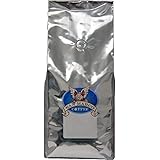Latte vs. Cappuccino: Unraveling the Delicious Differences in Your Coffee Cup
In the bustling world of coffee, few questions arise more frequently than the distinction between a latte and a cappuccino. In fact, many coffee lovers often wonder what truly sets these two popular espresso beverages apart, impacting their daily coffee choices. As explored in the video above, while personal preference always reigns supreme, there are clear, foundational differences in preparation that define each drink.
Both lattes and cappuccinos share a common origin in their espresso base. For a perfectly balanced foundation, we consistently use 16 grams of coffee to yield a 2-ounce shot of espresso for either drink. This consistency ensures the coffee’s strength remains the same, allowing the milk component to truly shine as the differentiating factor.
The Heart of the Matter: Mastering Milk Steaming for Both Drinks
Achieving the ideal milk texture is crucial for both lattes and cappuccinos. The process begins with proper milk preparation. Always remember to purge your steam wand before and after each use, removing any condensation or old milk. This vital hygiene step prevents unwanted flavors and ensures a clean steam output.
When steaming milk, maintain a 45-degree angle with your jug and position the steam wand just below the surface. This technique aims for a “kissing” sound, indicating air is being gently incorporated without creating large, undesirable bubbles. Continuously spinning the milk in the jug during steaming helps create a consistent, velvety texture. Using the palm of your hand on the bottom of the jug allows you to gauge the temperature; once it becomes too hot to comfortably hold, the milk is ready.
Crafting the Perfect Latte: Mellow, Microfoam, and Art
The latte, known for its mellow flavor and smooth texture, relies on a generous amount of milk. Typically, about 10 ounces of cold milk are steamed for a standard 12-ounce cup containing 2 ounces of espresso. During the steaming process, listen for that subtle kissing sound for approximately 5 seconds, allowing the milk volume to rise just a couple of centimeters. The goal is to produce silky microfoam, which integrates seamlessly with the milk, creating a homogenous, creamy consistency. Bubbles are always a sign of poorly steamed milk, so a gentle tap and swirl can help achieve that desired smooth, shiny appearance.
Pouring a latte requires a bit of finesse, often allowing baristas to showcase their latte art skills. Begin by tilting your cup to about a 45-degree angle. Start pouring from a higher position, allowing the milk to integrate beneath the espresso’s crema. As the cup fills, gradually lower the jug and increase the flow to “push” the microfoam to the surface, forming your chosen design. This technique leaves just a thin, creamy layer of microfoam on top, contributing to the latte’s signature smooth mouthfeel and coffee-forward taste.
The higher milk content in a latte means the espresso is more diluted, resulting in a milder coffee taste. This makes it a popular choice for those who prefer a less intense coffee experience. Even a simple tulip or heart design can elevate the drinking experience, as demonstrated by skilled baristas.
Distinguishing the Cappuccino: Bold, Frothy, and Iconic
The cappuccino offers a distinctly bolder coffee flavor with a much frothier, thicker milk texture. For this drink, you start with less milk, typically around 7 ounces, with the aim to approximately double its volume during steaming. This means you incorporate more air than you would for a latte, creating a much thicker, melt-in-your-mouth texture often likened to melted marshmallows.
The steaming technique for a cappuccino differs slightly in its emphasis on air incorporation. While maintaining the 45-degree jug angle and the kissing sound, you keep the steam wand closer to the surface for a longer duration, allowing more air to be folded into the milk. This process creates the characteristic thick, airy foam. It’s crucial to polish the milk immediately after steaming by swirling it vigorously, ensuring the foam and liquid milk remain integrated and do not separate.
The cappuccino pour is generally considered easier than a latte pour, as the emphasis is on the foam rather than intricate art. After gently swirling your espresso to gather the crema around the edges, tilt your cup. Instead of pouring from the spout, which holds back foam, pour from the side of the jug. Keep the pour low and steady, aiming approximately a third of the way into the crema. This method helps create the iconic “monk’s head” appearance, with a brown ring of crema around the edges of the thick white foam.
Due to the significantly lower milk content, the coffee-to-milk ratio in a cappuccino is much stronger, giving the illusion of a more potent coffee even though the same espresso base is used. The thick layer of foam ensures that with every sip, you experience both the robust coffee and the airy milk simultaneously, a truly delightful combination.
The Spoon Test: A Definitive Visual Comparison
For a clear, visual demonstration of the foam differences between these two beloved drinks, a simple spoon test offers a definitive answer. In a properly made cappuccino, the thick, dense foam is substantial enough to support a spoon resting on its surface without sinking. This is a hallmark of expertly steamed milk, showcasing its volume and stability.
Conversely, when performing the spoon test on a latte, the spoon should gently sink into the drink. This occurs because a latte features significantly less foam and more liquid milk, placing the liquid closer to the surface. This practical test highlights the textural distinctions, proving that while both are espresso-based drinks, their milk preparation creates entirely different experiences for coffee enthusiasts.







